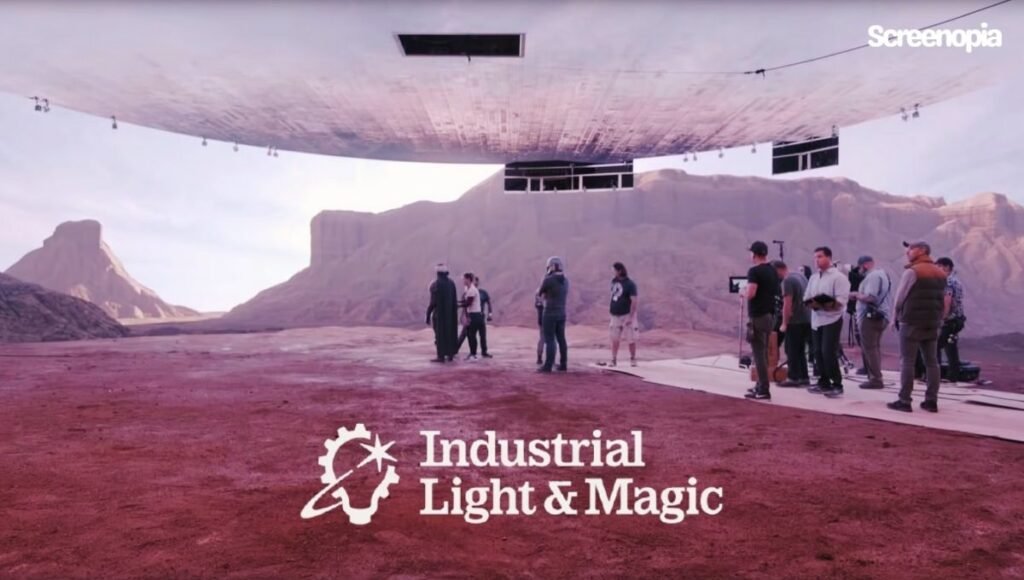When it comes to cinematic moments that awe and inspire, from the explosive battles of Star Wars to the terrifying realism of the Jurassic Park dinosaurs, one name stands above all others: Industrial Light & Magic (ILM).
This year, ILM celebrates its 50th anniversary, a milestone marked by groundbreaking innovation, a culture that champions creativity, and a legacy that transformed the very language of movies.
The Birth of ILM: A Revolution Begins
Industrial Light & Magic was born in 1975 out of necessity. Director George Lucas had a vision for Star Wars: A New Hope that no existing effects studio could fulfill. To bring his space epic to life, Lucas assembled a small team in a Van Nuys warehouse, spearheaded by visual effects pioneer John Dykstra. This team became ILM, setting out to create effects that would feel real and dynamic like never before.
The result, when Star Wars hit theaters in 1977, was nothing short of revolutionary. ILM’s blend of practical miniatures, motion-controlled cameras, and inventive techniques gave Spielberg’s galaxy far, far away a visual language that would define a generation and set the gold standard for cinematic storytelling. The company’s origin and existence are inseparable from Star Wars, as without ILM’s ingenuity, the original film would have been drastically different and less impactful.
Reinventing Visual Effects: From Models to Digital Marvels
As ILM grew, so did its influence and innovation. The studio mastered new techniques throughout the 1980s and ’90s, pushing boundaries with optical compositing, puppetry, matte paintings, and animatronics. Yet, the true revolution came with the rise of computer-generated imagery (CGI).
ILM made history with the liquid metal T-1000 in Terminator 2 and the unforgettable Davy Jones in Pirates of the Caribbean: Dead Man’s Chest. But the game-changer was Jurassic Park (1993). By combining CGI dinosaurs and lifelike animatronics, ILM delivered prehistoric creatures that were terrifyingly real and fully alive on screen, forever changing the possibilities of filmmaking.
This digital shift wasn’t just a technical achievement; it rewrote how stories could be told, expanding filmmakers’ toolkits and audience expectations. ILM became synonymous with pushing the limits of what’s possible in movie magic.
Innovation and Culture: The Heart of ILM’s Success
What has kept ILM at the forefront for 50 years? Industry insiders emphasize its fearless spirit of invention and its people-centric culture. With over 3,500 artists and technicians in five countries today, ILM thrives on collaboration, creativity, and pushing visual storytelling boundaries.
ILM’s innovations go far beyond movies, touching television, immersive experiences, and interactive media. Technologies like ‘StageCraft,’ which uses massive LED screens to create real-time digital backgrounds for productions such as The Mandalorian, showcase ILM’s continuing leadership in virtual production. They’ve also pioneered immersive concerts, like ABBA Voyage, blending technology and artistry for unforgettable experiences.
This unique culture of innovation and support makes ILM not just a company but a creative home where talent flourishes, with some experts noting employees celebrating decades-long careers within its walls. It’s this synergy of cutting-edge technology and exceptional human talent that keeps ILM’s work fresh, relevant, and transformative.
Expanding Horizons: Beyond Classic Visual Effects
While Star Wars and Jurassic Park are landmarks, ILM’s influence extends beyond iconic blockbusters. They’ve played a vital role in major franchises like Marvel, continuing to create spectacular effects that deliver immersive universes today. The studio’s award-winning work also contributes to TV series, video games, and scientific visualizations, showing how their technology and artistry enrich storytelling across varied mediums.
As the latest ILM projects demonstrate, the company is diving into AI, real-time graphics, and machine learning to enhance creativity without losing the artistry that defines its legacy. Their future isn’t just about bigger visual spectacles but smarter, more seamless storytelling tools that keep audiences captivated.
What’s Next for ILM?
Looking ahead to the next 50 years, ILM’s leadership remains committed to breaking new ground. They predict continuous transformation in how stories are told, with developments in immersive and interactive entertainment, feature animation, and virtual production. While no one can precisely predict the future, their culture of invention and dedication to storytelling positions them to lead for decades to come.
The ongoing release of Industrial Light & Magic: 50 Years of Innovation by Ian Failes offers fans and film historians a deep dive into ILM’s extraordinary journey, enriched with rare photos and interviews that reveal the passion behind the effects.
Why ILM at 50 Still Matters Today
Celebrating ILM’s 50th anniversary isn’t just about honoring the past; it’s about recognizing how this company fundamentally changed how filmmakers dream and how audiences experience cinema. ILM refused to accept limits, proving that visual effects could be emotional, immersive, and transformative.
The legacy of ILM is a testament to the power of creativity combined with technology, a reminder that movie magic is born from bold ideas and the courage to invent the impossible.



